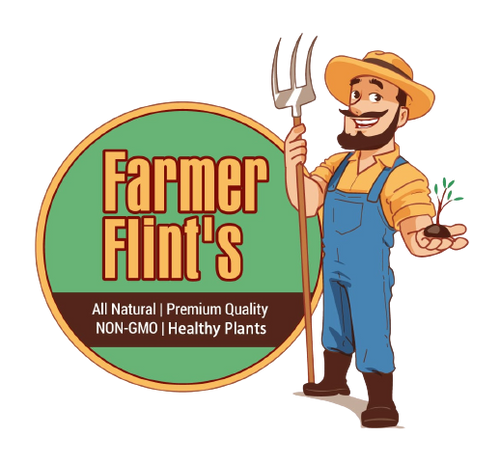Anaheim peppers are a popular variety of mild chili peppers that can add a flavorful kick to a variety of dishes. Whether you’re using them for salsas, stuffing them, or simply roasting them, growing Anaheim peppers at home can be a satisfying experience. This guide will cover all the steps to help you grow Anaheim peppers successfully, whether you're working with a garden bed or containers.
Why Grow Anaheim Peppers?
There are several benefits to growing Anaheim peppers at home:
- Mild Flavor: Anaheim peppers offer a mild heat, making them perfect for those who want a bit of spice without overwhelming the palate.
- Versatility: These peppers can be used in a wide range of dishes, from fresh salsas to roasted fillings and sauces.
- Easy to Grow: Anaheim peppers are relatively simple to grow, especially if you follow the right care guidelines.
Steps to Grow Anaheim Peppers
1. Choose the Right Location
Anaheim peppers need a warm, sunny environment to grow successfully. Select a location that gets at least 6 hours of direct sunlight each day. If you are growing peppers in containers, make sure the pots are large enough to support the root system—about 12-16 inches deep.
2. Start with Seeds or Seedlings
Seeds:
Starting Anaheim peppers from seed is an affordable option, but they need to be started indoors 8-10 weeks before the last frost in your area. Peppers are sensitive to cold temperatures, so starting indoors ensures a good start.
- Planting Seeds: Use seed trays or small pots filled with a well-draining seed-starting mix. Place the seeds about ¼ inch deep in the soil.
- Temperature: Keep the temperature between 70-85°F to help the seeds germinate. Using a heat mat can help maintain consistent warmth.
- Lighting: After germination, move the seedlings to a location with plenty of light, such as a bright window or under grow lights.
Seedlings:
You can also purchase young Anaheim pepper plants from a nursery, which can save you time and effort. This is a good option if you’re uncertain about starting seeds indoors.
3. Prepare the Soil
Anaheim peppers thrive in well-drained soil that is rich in organic matter. The soil should have a slightly acidic to neutral pH (6.0-7.0).
- Amend the Soil: Before planting, add organic compost or well-balanced fertilizer to enrich the soil with nutrients that peppers need to grow.
- Ensure Drainage: Good drainage is essential to avoid waterlogged roots, which can cause rot.
4. Transplanting the Seedlings
Once your seedlings have reached 3-4 inches tall and the danger of frost has passed, it’s time to transplant them into the garden or containers.
- Spacing: Space the plants 18-24 inches apart, giving them enough room to grow and for air circulation.
- Planting: Dig a hole that’s slightly larger than the root ball of the seedling. Place the seedling in the hole, fill it with soil, and gently firm the soil around the roots. Water thoroughly after planting.
5. Care and Maintenance
To ensure healthy growth, follow these care guidelines:
- Watering: Anaheim peppers need consistent moisture. Keep the soil evenly moist, but avoid overwatering. Water at the base of the plant to prevent moisture on the leaves, which can encourage fungal diseases.
- Mulching: Apply a layer of mulch around the base of the plants to conserve moisture, regulate soil temperature, and reduce weed growth.
- Fertilizing: Feed your plants monthly with a balanced fertilizer, or one higher in potassium and phosphorus to support flowering and fruit development.
6. Pruning and Supporting the Plants
- Pruning: Regularly prune the plants to remove any leaves that are touching the soil. This helps to improve airflow and reduce the risk of fungal infections. If your plants grow tall, pinch the top tips to encourage bushier growth.
- Supporting: Anaheim pepper plants can grow tall, especially as the peppers begin to develop. Use stakes or cages to support the plants and prevent them from toppling over under the weight of the fruit.
7. Pest and Disease Management
While Anaheim peppers are fairly resilient, they may still face issues with pests and diseases:
- Pests: Aphids, flea beetles, and spider mites are common pests that can affect peppers. Use insecticidal soap or neem oil to control these pests, and regularly inspect the plants for damage.
- Diseases: Anaheim peppers are susceptible to fungal diseases like powdery mildew and bacterial wilt. To prevent these issues, ensure the plants have proper spacing and avoid overhead watering, which can encourage fungal growth.
8. Harvesting Anaheim Peppers
Anaheim peppers are typically ready for harvest 70-90 days after transplanting, depending on growing conditions. The peppers change color as they ripen—starting out green and eventually turning red when fully mature.
- Harvesting: Use clean scissors or pruning shears to cut the peppers from the plant, leaving a small part of the stem attached. You can harvest the peppers when they are green for a milder taste or wait for them to turn red for a sweeter, more intense flavor.
- Continued Harvesting: Picking peppers regularly will encourage the plant to produce more fruit throughout the growing season.
Conclusion
Growing Anaheim peppers at home is a straightforward and rewarding gardening project that allows you to enjoy fresh, flavorful peppers in a variety of dishes. By following these steps and giving your peppers the care they need, you’ll be on your way to a successful harvest. Whether you're using them in salsas, stuffed peppers, or grilled dishes, Anaheim peppers are a versatile addition to any garden.


